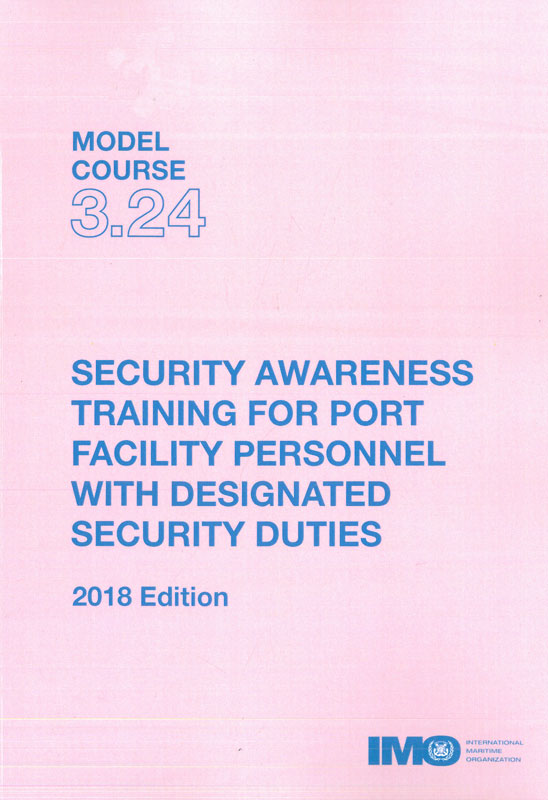Security Awareness Training for Personnel with Designated Security Duties. Model course 3.24
Издание полностью на английском языке
After the adoption of the International Convention on Standards of Training, Certification and Watchkeeping for Seafarers (STCW), 1978, the International Maritime Organization (IMO) recognized the need to provide guidance to maritime academies and training institutes to develop model training courses that are in compliance with STCW Convention requirements for certification of seafarers. Hence the IMO model course programme was introduced to provide guidance with a view to supporting maritime training providers and to assist maritime administrations responsible for the approval of STCW courses.
The model course programme has been a long-time success and IMO has developed a number of model courses to help in effectively implementing the STCW Convention and the Knowledge, Understanding and Proficiency (KUP) requirements of the STCW Code. I believe that the key to this success is adherence to the requirements of the Convention while, at the same time, these requirements are supplemented with industry best practices so that seafarers can be confident in carrying out the duties on board. The success of a course depends on the skills and competence of individual course facilitators. As part of the model courses, IMO has also developed guidance on the implementation of the model course, which may help those less experienced facilitators to make each course a success.
Whilst aiming to uniformly implement the requirements of the STCW Convention and Code, the model course programme is designed to provide flexibility so as to allow training providers to adjust the course programme to the needs of seafarers and trainees, based on their previous work experience and education.
I reiterate that IMO model courses are for the purpose of guidance only, and not to be regarded as an official interpretation of the STCW Convention. They can be of assistance to administrations to facilitate the process of approval of STCW course programmes, and could be used by maritime academies and training providers in the development of courses that satisfy the requirements set out in the STCW Convention and STCW Code.
This model course was validated by the IMO Maritime Safety Committee at its ninety-ninth session (16 to 25 May 2018) and I wish training providers and seafarers well, and hope that the course makes shipping safer.
Contents
Foreword
Introduction
Purpose of the model courses
Part A: Course Framework
Scope
Objective
Entry standards
Course certificate, diploma or document
Course delivery
Course intake limitations
Instructor qualifications
Use of the model course
Lesson plans
Presentation
Implementation
Teaching facilities and equipment
Teaching aids (A)
References (R)
Part B: Course Outline and Timetable Part C: Detailed Teaching Syllabus
Learning objectives
References and teaching aids
Competences
Part D: Instructor Manual
1 Introduction and course framework
2 Maritime security policy
3 Security responsibilities
4 Port facility security plan
5 Port facility security actions
6 Security equipment
Threat identification, recognition and response
8 Emergency preparedness, drills and exercises
9 Security administration
10 Closing ceremony
Part E: Evaluation
Introduction
Method of evaluation
Validity
Reliability
Subjective testing
Objective testing
Distracters
Guess factor
Scoring
Information requested of instructors who implement IMO Model Courses
Guidance on the implementation of IMO model courses



